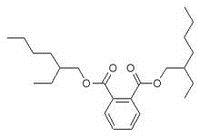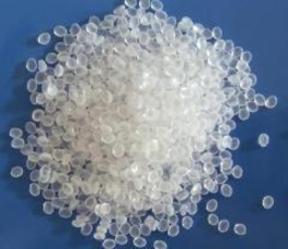Plasticizer
[Overview] Plasticizer, also generally called plasticizer. Plasticizer is a polymer material additive widely used in industry. Adding this substance in plastic processing can make it more flexible and easier to process. It can also weaken the mutual attraction between polymer molecules, which is the van der Waals force, thereby making it easier to process. Increase the mobility of the polymer molecular chain and reduce the crystallinity of the polymer molecular chain, that is, increase the plasticity of the polymer. It manifests as a decrease in the melt viscosity of the polymer, an increase in fluidity, a decrease in the hardness, modulus, softening temperature and embrittlement temperature of the product, and an increase in elongation, flexibility and flexibility. At present, plasticizers are mainly used in synthetic materials such as polyvinyl chloride, cellulose, vinyl acetate resin, synthetic rubber, and coatings. According to different chemical structures, the types of plasticizers currently on the market mainly include phthalate esters, aliphatic dibasic acid esters, trimellitate esters, polyol esters, citrate esters, phosphate esters, and polyesters. , epoxy fatty acids and their esters and other chemical structure types, among which phthalate esters are the most widely used and used main plasticizers. Its most common variety is DEHP (commercial name DOP). The chemical name of DEHP is di(2-ethylhexyl) phthalate. It is a colorless, odorless liquid and is widely used in industry.

Molecular structure of plasticizer DEHP
【Basic information】
Chinese name: Plasticizer Foreign name: Plasticizer
Alias: plasticizer, plasticizer Function: additive to increase the softness of materials
Application: plastic, concrete, cement, etc. Application discipline: polymer material related additives

Picture: Plasticizer
[New environmentally friendly green plasticizer]
For environmental and health safety reasons, the application of phthalate plasticizers is experiencing more stringent regulatory restrictions. Research and development of environmentally friendly, health-safe, efficient, cheap and sustainable plasticizer varieties has become a Important trends in the development of alternatives to phthalate plasticizers. The new environmentally friendly and green plasticizers currently developed mainly include citrate ester plasticizers, epoxy ester plasticizers, epoxy ester plasticizers, epoxy ester plasticizers and other citrate ester plasticizers. The agent is synthesized with citric acid as the main raw material. Due to its non-toxicity and safety, it has now become one of the preferred environmentally friendly plasticizers in the domestic and foreign plastics industry. Citrate plasticizers have a very obvious plasticizing effect on PVC and are currently mainly used in non-toxic and safety-required materials
Some areas of high. Epoxy ester plasticizer is a kind of traditional and fresh multi-functional environmentally friendly plasticizer. Its structure contains epoxy functional groups. Compared with phthalate plasticizers, it is non-toxic, heat-resistant and Advantages such as good light resistance. For PVC resin, epoxidized oil plasticizers have both plasticity and thermal stability. The raw materials are derived from nature, and the products are sustainable and degradable. The main uses of epoxy ester plasticizers include preservatives, lubricants, drugs, active agents, etc. They are widely used as plasticizers and stabilizers for PVC and have degradable functions. Epoxy ester plasticizers and polyester plasticizers have particularly good durability and are called “permanent plasticizers”. Because of its low toxicity and relatively safe use, it is widely used in children’s toys, wires and cables, beverage hoses, indoor high-end decorations and other fields. The biggest feature of polyester plasticizers, especially polyester plasticizers based on polyols, is their excellent resistance to extraction and softness, and almost no bleeding from the surface. Therefore, it is the plasticizer with the best performance. Variety.
【Plasticizer Toxicity Research】
Since the detection of phthalates in human tissue and autopsies in the 1970s, intensive and extensive animal testing and related volunteer trials have been conducted around the world to verify whether this plasticizer Harmful to human body. Animal tests have shown that some plasticizers can cause tumors and even death in rodents. Countries have promulgated corresponding regulations to strengthen the management of toxic plasticizers. There are many types of plasticizers, and the toxicity data of various plasticizers vary greatly. In comparison, chlorinated hydrocarbon plasticizers (chlorinated paraffin) are highly toxic because they contain photosensitive substances (fluorescent substances), while citrate esters are highly toxic. , Epoxidized soybean oil (ESO) plasticizer is considered a non-toxic plasticizer. Among common phthalates (also called phthalates), DEHP has a toxicity coefficient T=200, and the oral LD50 of rats and rabbits is greater than 3000 mg/kg body weight, so it is a low-toxic substance. The French Institute of Cancer Research fed four generations of rats with feed containing 0.05% of this product, and the results showed that it was not teratogenic or carcinogenic. The vas deferens degenerated and the pituitary cells in the forelimbs became enlarged in male mice and rats fed with higher doses of DEHP by the U.S. Environmental Health Administration’s Scientific Research Institute. Monkeys (marmosets) developed liver tissue lesions after receiving DEHP-containing plasma multiple times. The toxicity of other common phthalate plasticizers: DBP (dibutyl phthalate) toxicity coefficient T=50, the oral LD50 for animals (rats, rabbits, dogs) is greater than 8000mg/kg body weight , so it is a non-toxic substance. Rats were fed for five generations at a dose of 100 mg/kg body weight, and for three generations at a dose of 300 mg/kg and 500 mg/kg body weight. The animal’s reproduction, growth curve, and histological examination wereThere are no abnormalities and no carcinogenicity. Some studies report that exposing rodents to DBP can cause testicular atrophy or reduced fertility; other studies report that DBP has anti-cancer effects. DBP has new pharmacological functions in anti-cancer research. When mice were intraperitoneally injected with S180 cells without DBP, all mice developed ascites tumors and died after 38 days. However, the survival time of mice injected with S180 cells injected with DBP was prolonged, and 33.3% of the mice were normal within 3 months. When DBP is added to bone marrow suspension in horse serum and rat lung culture medium, leukemia cells can be significantly reduced and rapidly degenerated. It is very effective for autologous bone marrow transplantation to purify residual cancer cells. However, other phthalate plasticizers do not have this function.
[Analysis of domestic and foreign plasticizer markets]
Plasticizers are currently the most widely used additives in plastic rubber. Phthalate plasticizers have the largest production and consumption. Of the total plasticizer consumption, about 90% is used for PVC resin, and the remaining 10% Used in various cellulose resins, unsaturated polyesters, epoxy resins, vinyl acetate resins and some synthetic rubber products. In recent years, foreign research and development of plasticizers has focused on safety, greenness, and special use. The production of dioctyl phthalate (DOP) mostly uses clean solid acid catalysis to replace the traditional sulfuric acid catalysis process; some electrical insulation, food packaging, Special non-toxic plasticizers for medical and health products and high-performance, oil-resistant, extraction-resistant and migration-resistant plasticizers are constantly being developed, produced and put into use. With the global economic downturn and low economic efficiency of the entire industry, many small and medium-sized plasticizer devices will face the fate of being eliminated in the future. Similarly, there are also prominent contradictions in the domestic plasticizer industry: (1) The production process is uneven and the overall level is relatively low. Many companies still use the acid esterification process, resulting in poor product quality, small production scale, and serious environmental pollution; ( 2) The product structure is unreasonable, the varieties are single, the proportion of environmentally friendly and high-efficiency varieties is small, many special and high-performance varieties cannot be produced yet, and they are completely dependent on imports. (3) Equipment construction is too fast, resulting in overcapacity, low equipment operating rates, low profits in the entire industry, and lack of competitiveness. Many small and medium-sized equipment are facing the dilemma of being eliminated. Only by accelerating the process of greening and adjusting product structure, vigorously developing high-tech varieties, improving the performance of compound products, broadening application fields, and keeping up with the world’s development trend of plastic additives – compound multi-functionality, can the plasticizer industry gain a foothold in the capital market.
【References】
1. Lailei et al., Research progress of new environmentally friendly plasticizers [A], Plastics Technology, 2011, 9 (39)
2. Wang Bo et al., Research Progress of Environmentally Friendly Plasticizers[A], Plastics Industry, 2013.5(41)
3. Jia Puyou et al., Research Progress of Green Plasticizers [A], China Plastics, 2014.7 (28)
4. Tao Gang et al., Domestic and foreign plasticizer market analysis and development trends [A], 2008.6.(36)
5. Shi Wanchong et al., Toxicity of Plasticizers and Related Regulations [A], Plastic Additives, 2007 (42)
Plasticizer_Kain Industrial Additive
This article is from the internet and does not represent Morpholine position. Please indicate the source when reprinting.https://www.morpholine.top/archives/45069


